
Stumbling Over Rocks
Louis Mainwaring Foster, 2024 BIPOC Fieldwork Scholarship Recipient
Thanks to this scholarship, I spent part of my summer working on the Brač Island Project along with a mixed team of students from University of Colorado Boulder, England, and Croatia. This summer was the last full season of excavation before a study season in 2025, thus there were a lot of objectives.
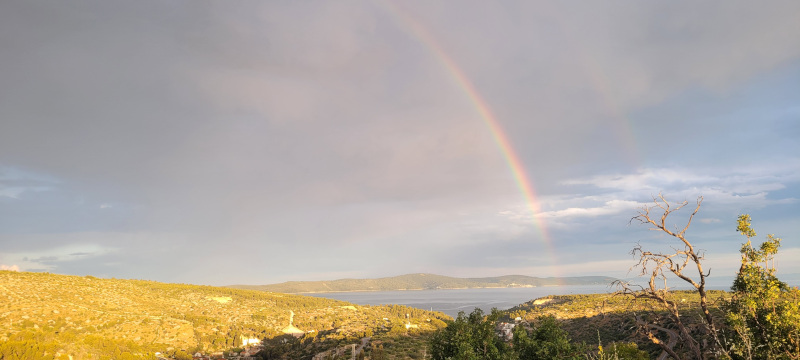
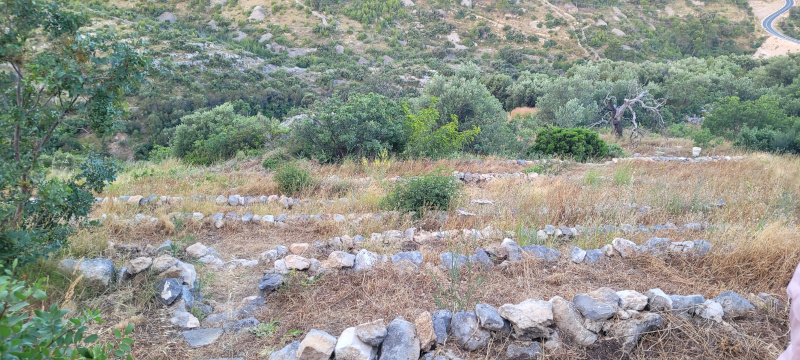
For the sake of the brevity of this report, my discussion of my time on the project will focus on Areas 1: the new terrace trench on the steep southern slope of Gradina Rat. This terrace trench’s aim was twofold, the first being to give a greater context to activity on the site during the Iron age and second to analyze the variety of finds from the large-pottery rich erosional deposit down this slope. After spending some time clearing away plants and other debris, a 3×5 meter trench was laid out across 3 terraces, with focus being placed on the fifth and sixth trenches from the top 19th century terrace walls. The excavation proceeded smoothly despite the islands attempts to impede us, Brač being known for being covered in lots and lots of rocks. The terrace trench produced material and soil ranging from the topsoil that accumulated above the 19th century terrace fill all the way down to fill from around the late 9th to 6th century BCE.
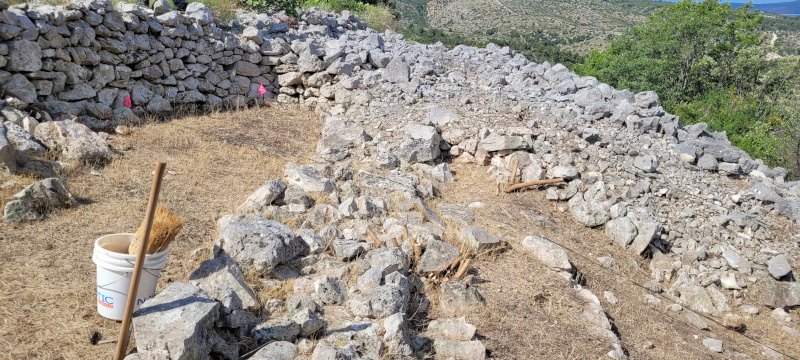
The methodology of our excavation process involved adapting the details and instructions from the Corinth Excavations Archaeological Manual by Alicia Carter Johnson, Guy D. R. Sanders, and Sarah A. James. This manual really aided me when I was trying to make sense of the material we were excavating. Details in the manual helped delineate soil layers based on composition, finds, and color change. We were often rotating between excavating, filling forms, and sieving in order to give us a big picture perspective all the while being guided by our trench supervisors. Being part of filling in the detailed forms for each layer helped me understand ways to break down the process of appraising the information that was being uncovered on site. Many of the details present in the Corinth manual along with the guidance of my trench supervisors will be crucial tools for helping me on future excavations.
The layer of the deposit in the terrace trench that I really enjoyed excavating was the 1st century BCE Erosional Deposit 2. This stratum was distinguishable by the compact, light yellowish brown, sandy/clayey silt. As is usual on Brač, about half of the inclusions were small boulders and cobbles, but there was also a large sample of pottery. There were also other types of inclusions along with this soil, namely charcoal, animal bones, shell, and a few chunks of building materials (clay and daub). I have never seen daub in person, so the presence of white and yellow clay might indicate a large presence of a decomposing wattle and daub construction. In my experience, these sorts of finds are the best since the information and building techniques that we learn about in class come to life in the field.
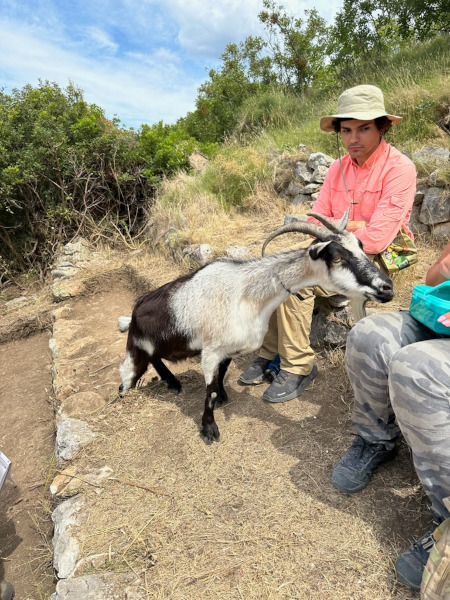
A variety of interesting finds, learning new excavation methodology, and enjoying the Mediterranean sun are some of the reasons I love to excavate. Every couple of days, a local visitor, in the form of a playful goat, Lola, dropped by the trenches to say hello and remind us to stay hydrated. Other fauna visitors included a snake that was trapped beneath one of the backfill tarps, which I luckily managed to extract without any bites.
After a hard days work on site and afternoon duties like pottery wash or pottery sorting, one could find me either in a local pub watching the pre-tournament matches for the 2024 Euros, relaxing at the beach, or eating lots of bakery items. I really enjoyed getting the opportunity to sort pottery since I find it very challenging and I always marvel at how easily experts can distinguish types of pottery that looks completely the same to my eye. It was also interesting to notice the presence of pottery from local sources, Rome, and Greece from a variety of periods all in one site and wonder how and why that might occur. I learned so much during this season of the Brač Island Project and I am grateful to ASOR for aiding me with this experience.
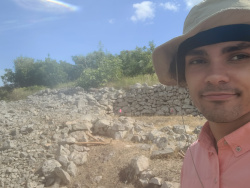
For more information about the Brač Island Archaeological Project, visit their website: https://bracislandproject.com/
American Society of Overseas Research
The James F. Strange Center
209 Commerce Street
Alexandria, VA 22314
E-mail: info@asor.org
© 2023 ASOR
All rights reserved.
Images licensed under a Creative Commons Attribution-NonCommercial-ShareAlike 4.0 International License
COVID-19 Update: Please consider making payments or gifts on our secure Online Portal. Please e-mail info@asor.org if you have questions or need help.
